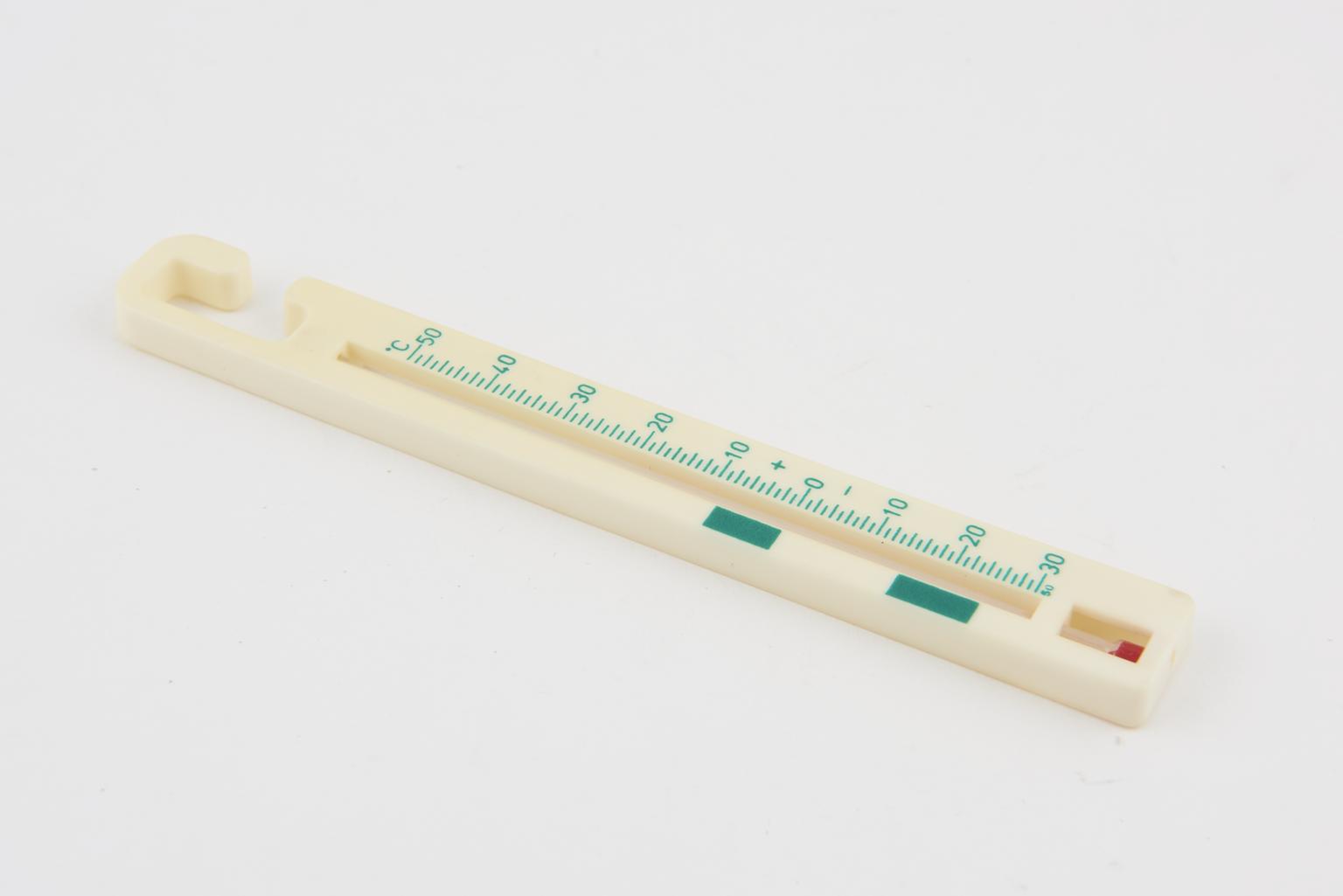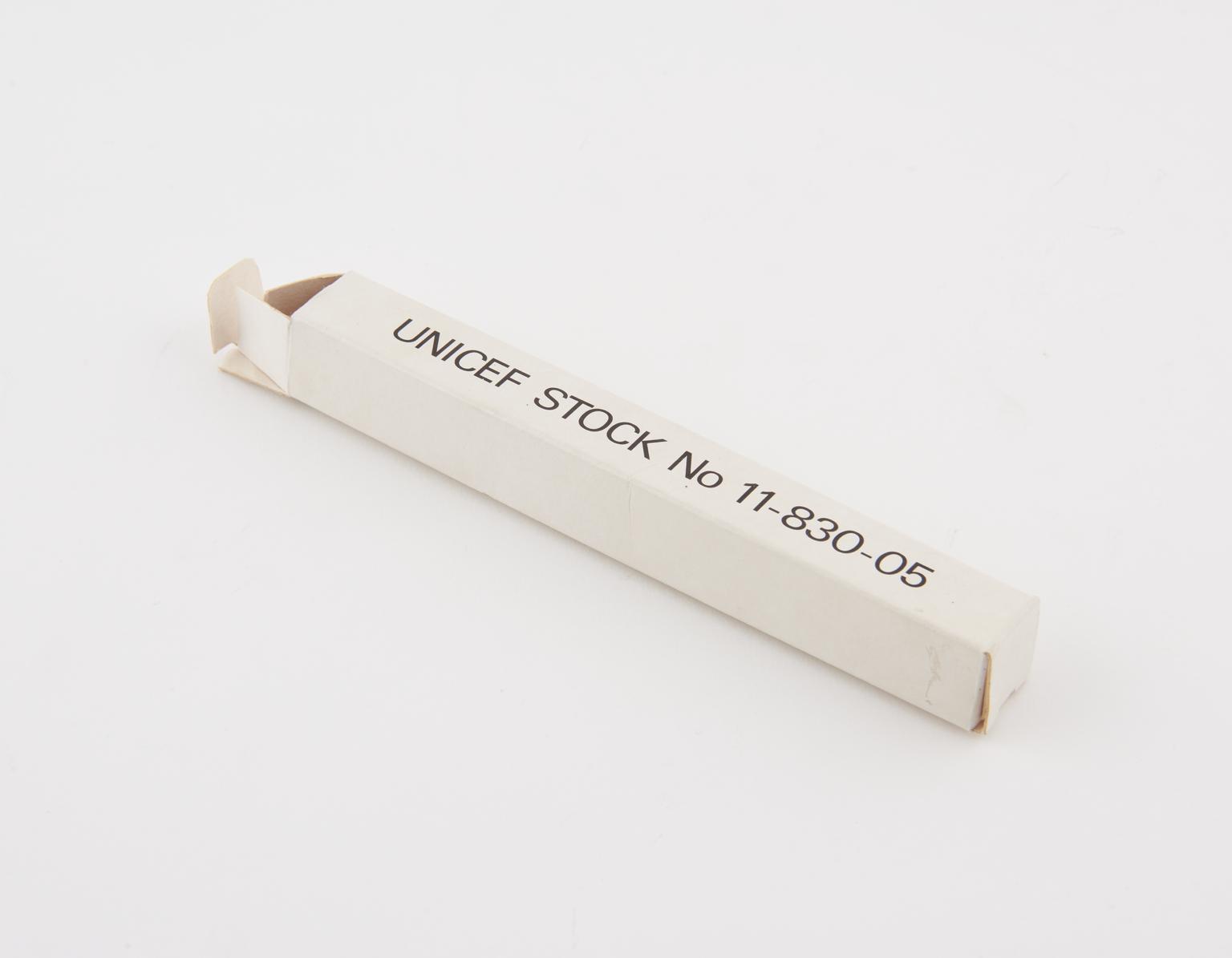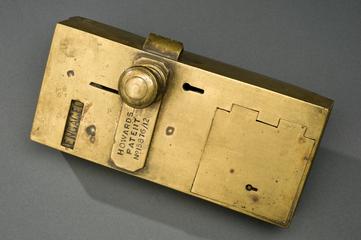
Vaccine thermometer for use in maintaining the cold chain, England, 1994
Vaccine Thermometer, model 66/380/0, for use in maintenance of the cold chain, approved by UNICEF and the World Health Organisation for use in the Expanded Programme on Immunisation. Manufactured by S. Brannon & Sons Ltd, Cumbria, England, and supplied by the UNICEF Supply Division, Copenhagen, Denmark, 1994.
More
Vaccines need to be kept below certain temperatures to remain effective. To prevent them from spoiling when being transported over long distances and in hot climates, a ‘cold chain’ system is established. This refers to the various means by which the vaccine is kept cool – from when it leaves the laboratory to when it is needed for use. This thermometer was developed to monitor the temperature of a mobile cold unit made for use in areas lacking the electrical supply needed for more conventional refrigerators.
Made by S Brannan & Sons Ltd, this thermometer was approved for use in the Expanded Programme on Immunisation (EPI) run by UNICEF (United Nations International Children’s Fund) and the WHO (World Health Organisation). The EPI aims to vaccinate the world’s children against the biggest childhood killers, such as diphtheria. When the programme was launched in 1974, fewer than five per cent of children were vaccinated. Today that figure is eighty per cent.
- Measurements:
-
overall: 6 mm x 142 mm x 18 mm, .005 kg
- Materials:
- plastic (unidentified)
- Object Number:
- 1994-145/1
- type:
- thermometer
- Image ©
- The Board of Trustees of the Science Museum












